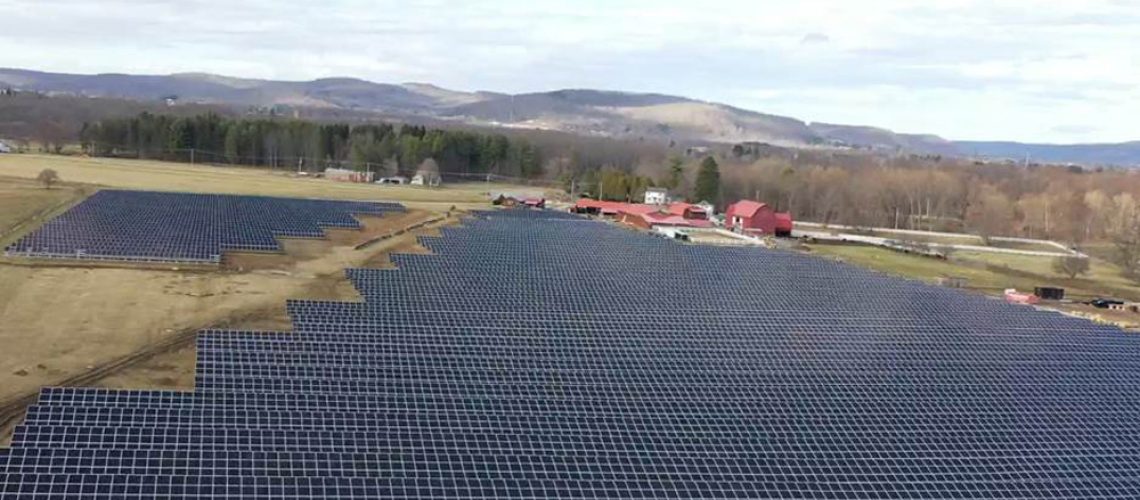Energy justice and promoting the development of low-to-moderate (LMI) income solar projects were common community solar themes at the Solar Energy Industries Association’s (SEIA) Finance, Tax and Buyers Seminar this week in New York.
During a panel titled, “How to Create Successful Community Solar and LMI Projects,” panelists from community and residential development companies said following statewide community solar programs set up Maryland and New Jersey recently, the community solar market should see additional programs set up in two or three more states this year.
Moderator Anna Balzer, solar community engagement coordinator of Boston Government Services, which supports the Department of Energy’s Solar Energy Technologies Office (SETO), opened the session by saying community solar programs are projected to provide $1 billion in monthly electricity bill savings over the next five years to U.S. subscribers.
Eric LaMora, executive director of community solar at Nautilus Solar, said community solar is enacted by state legislatures around the country to allow solar energy to close to 50% of U.S. households and small businesses that don’t physically have rooftops equipped for solar arrays.
By subscribing into community solar programs, developers and owners of such projects operate within a state utility’s framework in order to generate on average 10% to 20% savings to residents and business owners each month in the form of electric bill reductions, LaMora said, adding that community solar is now in 22 states.
Geoff Johnson, head of distributed generation for Cypress Creek Renewables, said low-to-middle income (LMI) community solar programs serve about 20% to 50% of that demographic bracket’s population, with NextEra Energy’s Florida Power & Light and Duke Energy being two utilities with noteworthy LMI community solar access programs in the southeast utilities’ territory.
Susannah Churchill, western policy director of Solar Landscape, a community solar developer based in New Jersey, one of the latest community solar states, said that in New Jersey the state utility framework requires 51% of projects be available to LMI residents for subscription.
LMI risks
Balzer was keen on pointing out that with any consumer subscription model comes non-payment risk among residents of the LMI bracket, which poses a risk to developers of community solar in new state markets.
“There is a distrust of community solar initially in LMI communities as many have been burned before by retail energy false promises,” said LaMora. “People are suspicious but there really are no hooks with community solar.”
LMI residents are leery to provide tax records or much documents at all in order to sign up for community solar, LaMora said. “We thought there would be a default rate among delinquent customers, but we found the opposite to be true because customers actually saw 14% to 20% of immediate savings on their electric bill.”
“LMI customers value electricity as much as their main bills and expenses,” LaMora said. “When it comes to keeping the lights on and food on the table, what are you going to pick with savings like this?,” queried LaMora during the community solar panel.
The three community solar developers agreed that Census Track Data and Self Attestation are the best tools to navigate where to deploy new LMI solar projects.
With few low-income bracket residents willing to provide tax records in a utility framework, developers site new projects based on statewide census track data, which shows counties and municipalities with higher LMI demographics over others.
Ben Healey, chief commercial officer of PosiGen, a residential solar installer to LMI residents, said similarities between his company and the community solar project developers to LMI groups are plenty. New Orleans-based PosiGen’s residential rooftop customers still show a delinquency rate of about 10% on payments across a group of 1,200 customers, while the company quickly turns power back on if payments are made after 90 days of non-payment, he said.
“New Orleans customers still pay monthly electric bills in cash, while the energy burden in the south is still felt from the gas utility side of the energy market,” Healey said.
Solar Landscape’s Churchill said self attestation is a method of identifying LMI community solar communities that involves interested subscribers in community programs just providing a signed disclosure with minimal proof of residence and that the household qualifies by a certain income standard to receive community solar discounted from its electric bill.
While the majority of low-income consumers having a low or no FICO credit score to serve as a payment metric, the federal Low Income Home Energy Assistance Program (LIHEAP) provides the utility market a framework for community solar subscribers to self-attest to their income as a means to more equitable solar deployment, Churchill said.
As was before, LMI solar subscribers continue to receive one electric bill each month under a community solar program, with the community solar aggregator stepping in to pay the customer’s bill to the utility under a consolidated billing system, Churchill said. Cypress Creek’s Johnson said the consolidated billing system employed by a majority of the community solar market is the best method to keep LMI customers enrolled in community solar, as it provides a hands-free method of providing the savings of solar energy to low-income residents without additional paperwork or billing.
Challenges to adoption
Despite community solar providing social responsibility from an environmental, social and governance (ESG) mindset in the U.S. energy market, Nautilus Solar’s LaMora and Solar Landscape’s Churchill agreed that public utilities continue to be opponents to the widespread adoption of community solar.
“Utilities don’t want this,” LaMora exclaimed. “They’re forced into it. We have to get this into more states and try to work out this combative relationship.”
Speaking to pv magazine USA on the sidelines of the SEIA Finance seminar, LaMora said other states around the Mid-Atlantic region are primed for community solar, pointing to Delaware as a state with favorable demographics, after advancements in neighboring states New Jersey and Maryland.



